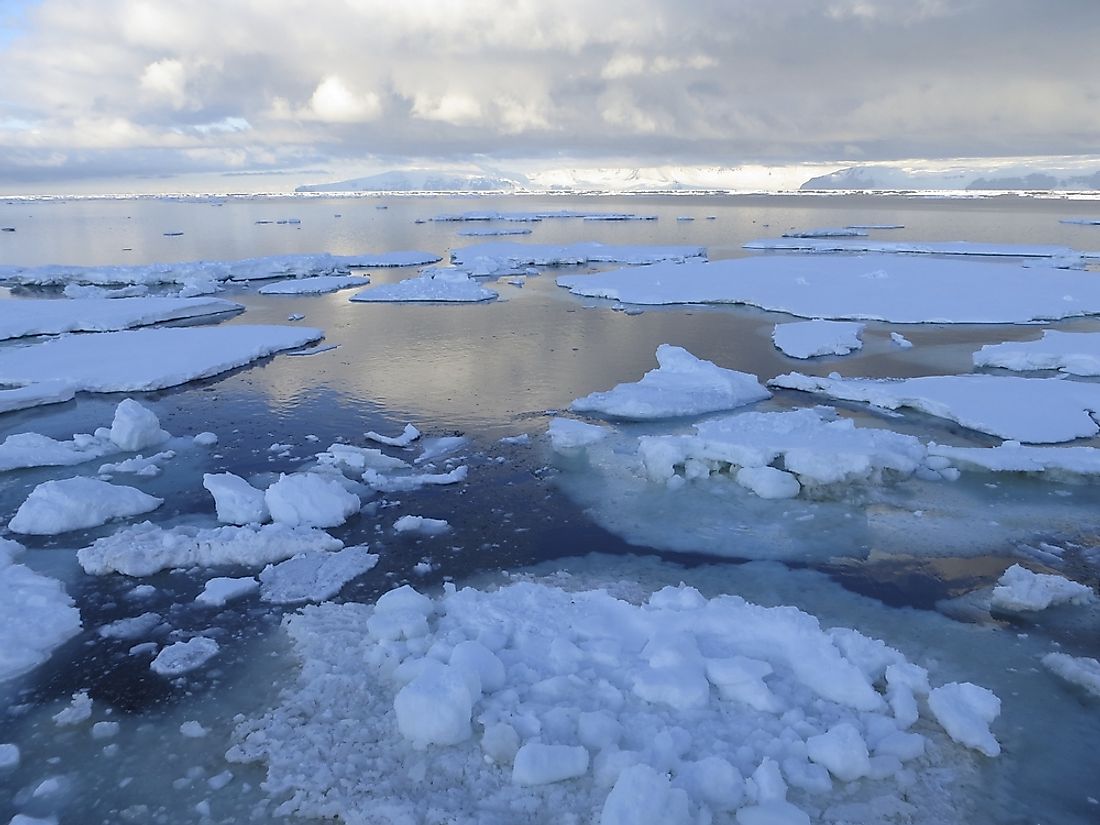The Marginal Seas Of The Southern Ocean

The Southern Ocean comprises the southernmost oceanic waters of the Earth. It is the fourth largest ocean on the planet. On a geological basis, the Southern Ocean is the youngest ocean of all and was formed about 30 million years back when the continents of South America and Antarctica separated and the Drake Passage opened up. The Southern Ocean is generally very deep with the depth ranging from 13,000 to 16,000 ft in most parts. This ocean is very rich in natural resources and marine life. Blue whales, fur seals, colossal squids, penguins, orcas, etc., inhabit the waters of this ocean. An abundance of supply of phytoplanktons in the waters here encourages a rich and varied marine life. The Southern Ocean features a number of marginal seas and passages. Some of the important water bodies that are a part of the Southern Ocean are mentioned below:
Amundsen Sea
An arm of the Southern Ocean, the Amundsen Sea lies off the coast of Western Antarctica’s Marie Byrd Land. The eastern and western extent of the Amundsen Sea are marked by the Cape Flying Fish and Cape Dart, respectively. The Thwaites Ice Tongue extends into this sea which remains ice-covered in most parts.
Bellingshausen Sea
This sea is located off the western coast of the Antarctic Peninsula. The Peter Island is to the north of this sea. The Alexander Island and the Cape Flying Fish are located to the east and west of this sea, respectively. The Bellingshausen Sea encompasses an area of around 487,000 square km.
Davis Sea
The Davis Sea is a part of the Southern Ocean that extends between the Shackleton and the West Ice Shelves along East Antarctica’s coast. The sea has a maximum depth of 4,300 ft and according to some accounts, it has an area of 21,000 square km.
D'Urville Sea
Named after a French explorer, the D'Urville Sea is located off the coast of East Antarctica. More specifically, the sea is located to the north of Adélie Land’s coast.
Drake Passage
A body of water between Antarctica’s South Shetland Islands and Cape Horn of Chile, the Drake Passage is located in the area where the waters of the Atlantic, Pacific, and Southern Oceans meet. The Drake Passage has a length of 800 km which is the shortest route between Antarctica and the nearest landmass. The sea here is highly choppy and dangerous for passing vessels. However, the Drake Passage is also popular for marine life observation as whales, dolphins, and several species of seabirds including penguins thrive in the region.
Ross Sea
A deep bay of the Southern Ocean, the Ross Sea exists between Marie Byrd Land and Victoria Land of Antarctica. The waters of the Ross Sea are rich in nutrients that support plankton growth which in turn favors an abundance of marine fauna. 10 species of mammals, 6 species of birds, and 95 species of fish are known to inhabit the waters of the Ross Sea. The sea is the site of much scientific research.
Scotia Sea
The Scotia Sea is located at the boundary between the South Atlantic and the Southern Ocean. The Drake Passage lies to the west of this sea while the Scotia Arc defines the limits of the Scotia Sea in the other three directions. The sea has a surface area of 900,000 square km and a maximum depth of 19,757 ft.
Weddell Sea
The Weddell Sea is a deep embayment in Antarctica’s coastline. The sea has an area of 2,800,000 square km. The Antarctic Peninsula defines the boundary of the sea to the west while East Antarctica’s Coats Land forms the boundary of the Weddell Sea to the east. The sea is generally heavily iced and hence acts as a barrier to ships heading towards the Antarctic coast. The Weddell Sea is rich in marine fauna with petrels, seals, and penguins thriving in the waters of this sea.
Proposed Seas In The Southern Ocean
Several other parts of the Southern Ocean have been named by some organizations but are yet to be recognized by leading geographic authorities. These include the Cooperation Sea, the Cosmonauts Sea, the Somov Sea, the Mawson Sea, the Lazarev Sea, and some others.











